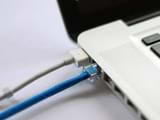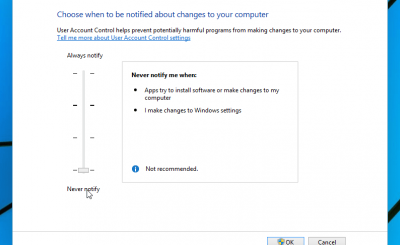In Windows 10, you can use Bluetooth to connect to headphones, webcams, and speakers, or send files and folders to other local devices. So it’s inconvenient when the Bluetooth button disappears from the Action Center.
Even if Bluetooth is working properly, it may still be missing from Action Center. due to incorrect settings. Another reason why Bluetooth doesn’t show up in Action Center is because your system doesn’t recognize Bluetooth devices.
Thankfully, there are ways to restore the Bluetooth button to the Windows 10 Action Center when it is lost or damaged.
1. Editing the Quick Actions menu
The Action Center menu is made up of two parts. At the top, it shows notifications from your installed apps and system.
At the bottom is the menu Quick Actions, which contains shortcuts to major settings. When there are many notifications that Windows 10 needs to show, it will collapse the menu Quick Actions to save space. To check all the shortcuts available in the Action Center menu, click Expand.
Bluetooth may disappear in Action Center because not all shortcuts are enabled by default, or you may have disabled Bluetooth shortcuts by mistake. Whatever the cause, here’s how you fix it:
B1: Press Windows + A to open Action Center and select Manage notifications from the top right corner.
B2: Click Edit your quick actions. This will open the menu Action Center.
B3: Choose Add > Bluetooth > Done.
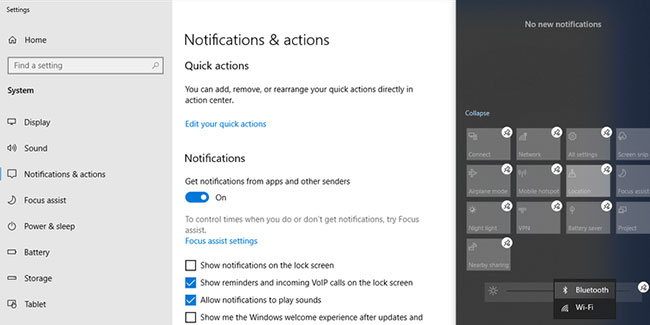
Note: When edit mode is on, you can move the tiles around as you like. If you want the Bluetooth tile to be part of the collapse menu, move it to the top row.
2. Check if your device supports Bluetooth
If you don’t have the option to add Bluetooth to Action Center’s quick list, it’s likely that your Bluetooth driver is missing or your device doesn’t support Bluetooth. Here’s how you can check if Bluetooth is properly supported and configured on your device:
B1: Press Windows + I to open Settings, then go to Devices.
B2: If the menu Bluetooth & other apps is displayed, your device supports Bluetooth technology.
B3: If the menu is not visible, search for device manager in the Start menu search bar and select the best match.
B4: Check if there is a Bluetooth menu inside the list of available devices.
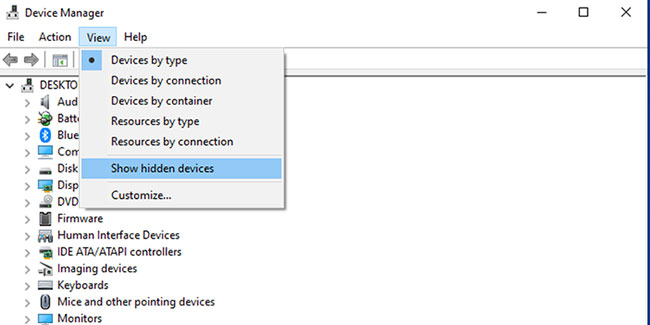
Bluetooth might be on the list Hidden devices, so click View > Show hidden devices and check if Bluetooth is listed.
If there is no Bluetooth in the list, you will have to purchase a Bluetooth adapter. When deciding which adapter to buy, check its compatibility properties.
3. Check Bluetooth settings
Even when installing Notifications & actions properly set, you still need to check Bluetooth Settings.
B1: Click Start > Settings > Devices > Bluetooth & other devices.
B2: In Related settings, click More Bluetooth Options.
B3: Select tab Options and accumulate Show the Bluetooth icon in the notification area.
B4: Click Apply > OK.
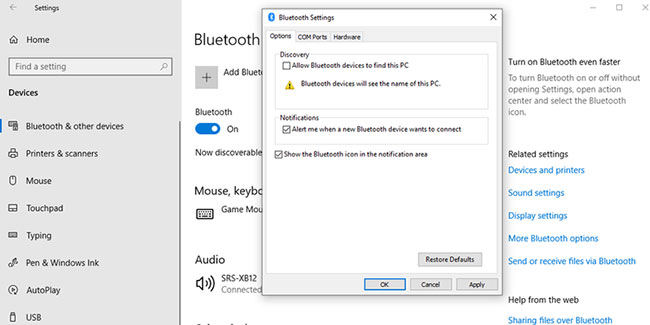
Fast Startup speeds up the startup process, so Windows 10 takes less time to launch. However, it can affect programs that are set to run at startup, so you’d better turn it off.
B1: Click Start > Settings > System.
B2: From the menu on the left, select Power & sleep.
B3: Click Additional power settings > Choose what the power button does.
B4: Choose Change settings that are currently unavailable.
B5: Unchecked Turn on fast startup (recommended).
B6: Press the button Save changes.
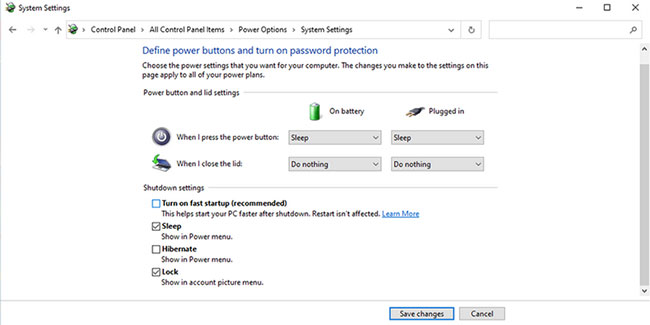
5. Run Bluetooth Troubleshooter
Running the troubleshooter may be enough to deal with most problems affecting Bluetooth functionality.
B1: Go Start > Settings > Update & Security.
B2: Click Troubleshoot > Additional troubleshooters.
B3: From the menu Find and fix other problems, press Bluetooth > Run the troubleshooter.
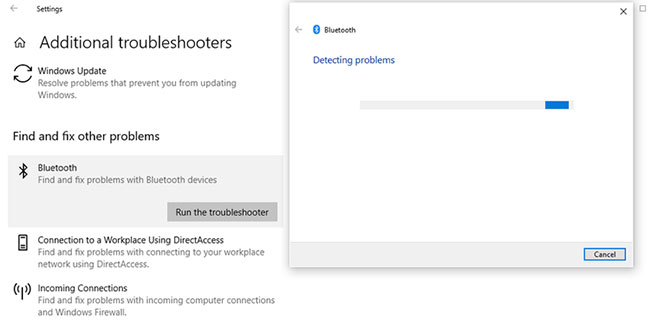
The Bluetooth troubleshooter will automatically fix any problems detected. Once the process is complete, restart your PC or laptop and check if Bluetooth is now available in the Action Center menu.
6. Use Hardware and Device troubleshooter
Hardware and Device troubleshooter now “hidden” in Windows 10. However, you can still access it using Command Prompt. Here’s how you can do it:
B1: In the Start menu search bar, search for command prompt and choose Run as administrator.
B2: Import msdt.exe -id DeviceDiagnostic. This will open the troubleshooter.
B3: Click next to start scanning.
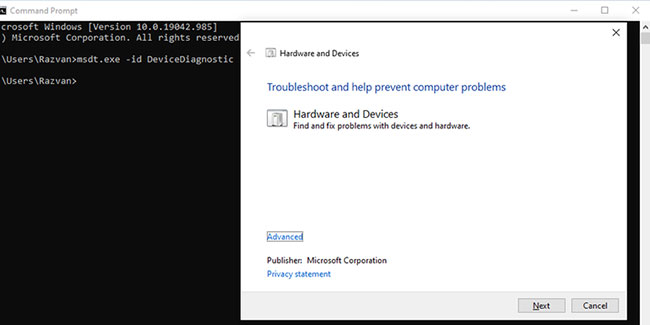
The troubleshooter will find and fix problems with your Bluetooth device. If it shows the message Troubleshooting couldn’t identify the problem, you have to try another solution.
7. Check the Bluetooth Support service
A third-party application or manual action by the user may have disabled the Bluetooth Support service, removing the Bluetooth icon from the Action Center. Here’s how you can check the Action Center service settings:
B1: In the search bar of the menu the best matches.
B2: Double click Bluetooth Support Service to open the window Properties.
B3: Check Service status at the bottom of the window. It will be displayed as Running.
B4: If the status is Running, click Stop and Start for a quick reboot.
B5: If the status is not Running, use the drop-down menu next to Startup Type and choose Automatic.
B6: Click the . button Apply to save the new settings.
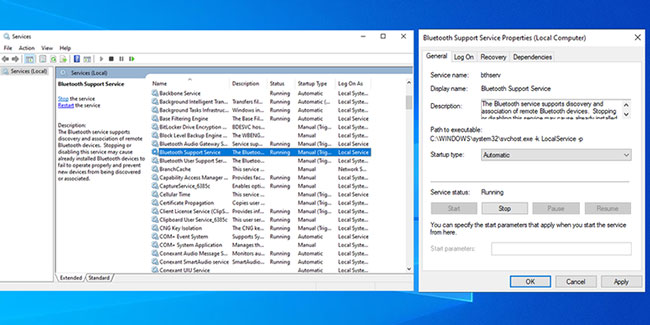
Startup Repair is one of those tools that you can find in the menu Advanced options. If you are experiencing a problem that indicates a broken system, you can fix it by using Windows Startup Repair.
B1: Press and hold Shift on the Windows login screen.
B2: Click Power > Restart. Now you will see the boot screen.
B3: Click Troubleshoot > Advanced options > Startup Repair.
B4: Select an admin account and enter the password, if required.
B5: Click Tiếp tục.
B6: Restart the PC after the Startup Repair tool has run.

9. Look for hardware changes
Besides providing an organized view of all installed hardware, Device Manager can also be used as a troubleshooting tool.
B1: In the Start menu search bar, search for device manager and choose the best match.
B2: Your device should be the first in the list. Right click on it and select Scan for hardware changes.
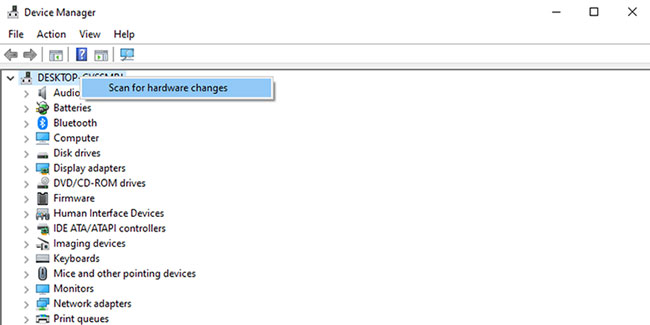
Good luck with your troubleshooting!
Source link: 9 ways to fix lost Bluetooth button in Windows 10 Action Center
– https://techtipsnreview.com/

